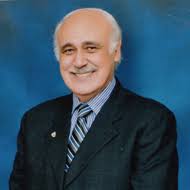
Writing a book, as any author will testify, is a concoction of 10 per cent inspiration, 30 per cent perspiration, and 60 per cent exasperation, especially if it involves any level of serious research.
Those writing fiction have it easy. They do not have to endure the penance that authors of historical works do, of having to check the accuracy of names, dates, and references. And happy are those scholars who can afford assistants to do the menial work. As a Chinese mandarin once said to a British administrator in Hong Kong, watching some Englishmen play an exhausting game of tennis in the sun: “Why don’t they employ coolies to do the hard work?”
It is fifty-five years since I sat in the Lahore Museum library – then a hermitage without facilities – and pored over material that could help me identify the provenance, subject matter, and if I was lucky the artist, of over 700 miniature paintings.
The LM collection contained examples of work from the early 16th century Jain manuscripts of the Kalpa Sutra, fragile pages from the Laur & Chanda manuscript from the Sultanate period, Mughal paintings of varying quality, assorted pictures from states like Jaipur in Rajasthan, superb examples of work done in the 18th and 19th century for Pahari rajas in the Himalayan states of Kangra, Guler and Basohli, and portraits of Sikh rulers and their flamboyant sardars.
Looking back, I marvel at the audacity with which I undertook such an ambitious uncharted voyage. Almost all those who encouraged me have gone – Professor Shakir Ali (the Principal of the National College of Arts), Mr. B.
A Kureishi (then Chairman of the Lahore Museum), and Mr. Khalid Iqbal (Head of the Painting Dept., NCA).
Fortunately, they could share with me the joy at seeing my research published in book form by Sotheby Parke Bernet and Oxford University Press.
The actual writing of that first book took less than six months, its gestation period eleven years. How I envied elephants their speedier birth-cycle!
The next book took less time. Written in six weeks, published in six months, it took forty years to sell. Since then, I have had twenty titles published. Some demanded to be written because the material deserved to be made public – such as president Yahya Khan’s papers covering Dr. Henry Kissinger’s secret visit to Beijing in July 1971, or documents in president Nixon’s archives which explained his ‘tilt’ towards Pakistan during the 1971 war with India.
Other books began after chance encounters with the work of 19th century British administrator-artists in the then India Office Library (now the British Library) and the Victoria & Albert Museum, London. Their sketches of Sindh, Punjab, inaccessible Balochistan, and the remote Khyber Pakhtunkhwa populate those well-maintained and above all, accessible collections. After discovering delightful water-colours in albums compiled by William Simpson and by Charlotte, Lady Canning, it seemed a shame not to bring them into the public domain.
Another project of mine lying fallow is a compilation of postcards of our part of the subcontinent. They belong to a pre-internet age when abbreviated messages (longer though than emojis) were sent from one part of the world to another. Their original utility as a note has been superseded by their value as a pictorial record of places of interest – Manghopir with its famous crocodiles, Karachi’s Bunder road when it still had tram rails, the Sukkur Barrage, the tombs of Multani saints, Lahore’s monuments, Quetta before the devastating earthquake of 1935, and the hill-station of Murree when one could still smell pines instead of petrol fumes.
Inevitably, these forays into a pre-1947 period of our history will attract the charge of a Raj bias. There is no answer to that, except that it is difficult to write about the past without appreciating those who made it our past.
At the moment you shall be holding this paper in your hands, I shall be holding in mine my latest book – Imperial Curiosity: Early Views of Pakistan, 1845 – 1906. It came hot off the press yesterday, on my seventy-ninth birthday.
Unfortunately, Covid 19 – the modern grim reaper – is a heartless, illiterate Philistine. It respects neither history nor literature nor fiction. It has, however, created through lock-downs more time either to read a book, or to write one.
A few days ago, I received a message from the Lahore Museum asking whether they could reprint my book on their collection. I was flattered, until I calculated that the LM book had been published in 1977, forty-fours ago. At that tortoise pace, my latest book should be due for reprinting in 2065.
Perhaps I should express my regrets now that I may not be available to attend its book launch.
Fakir S Aijazuddin is a noted thinker and columnist of Pakistan
Courtesy: Dawn

